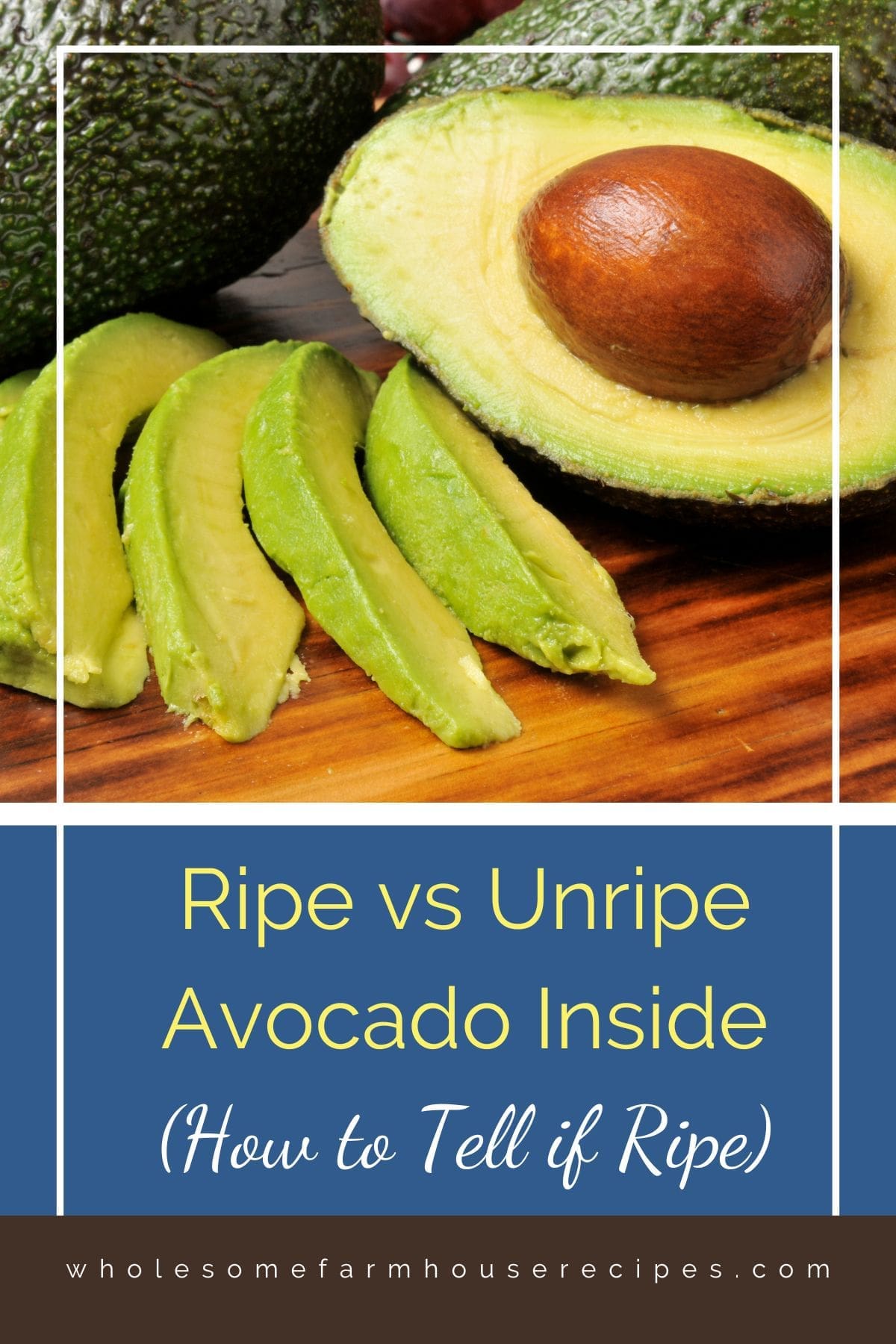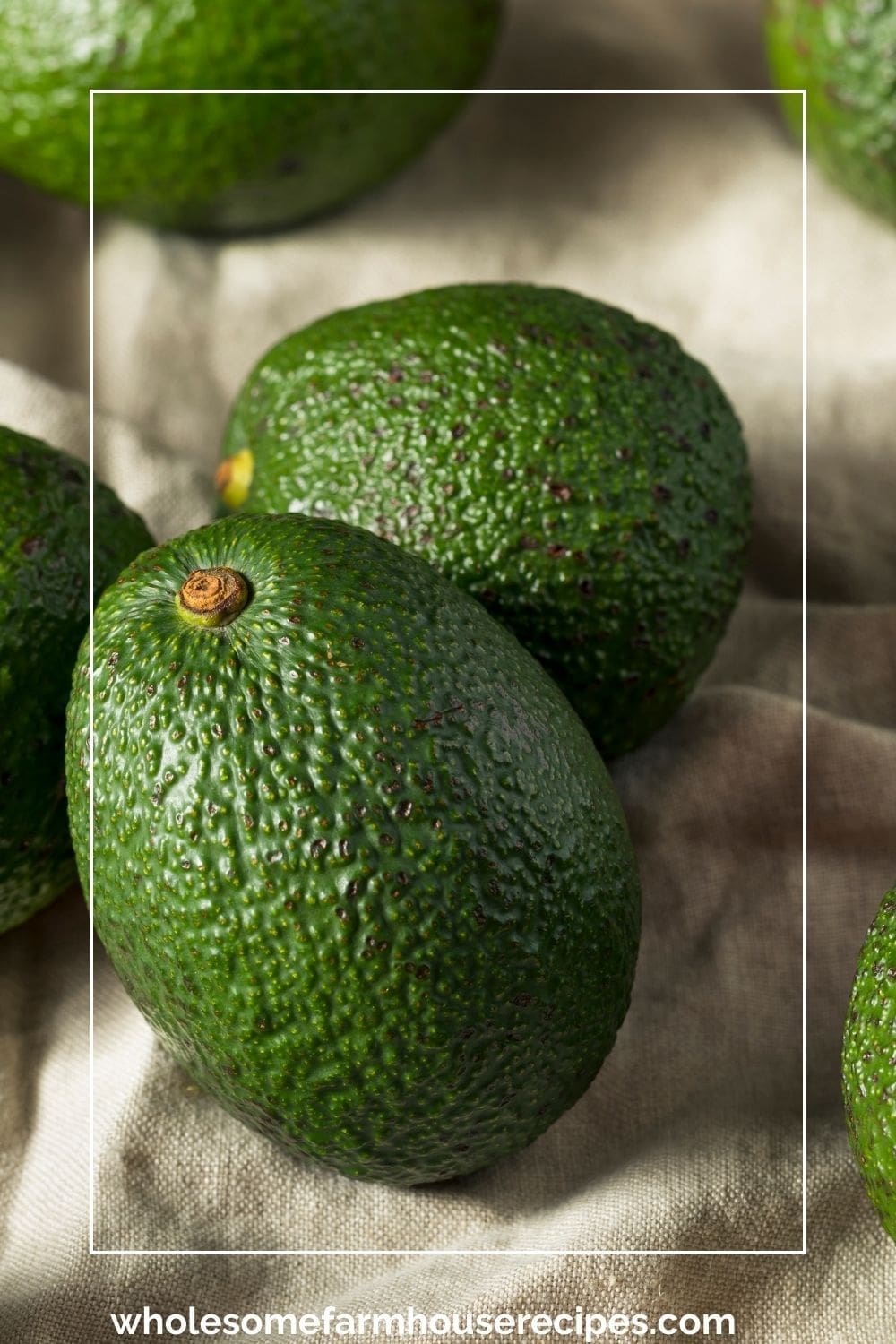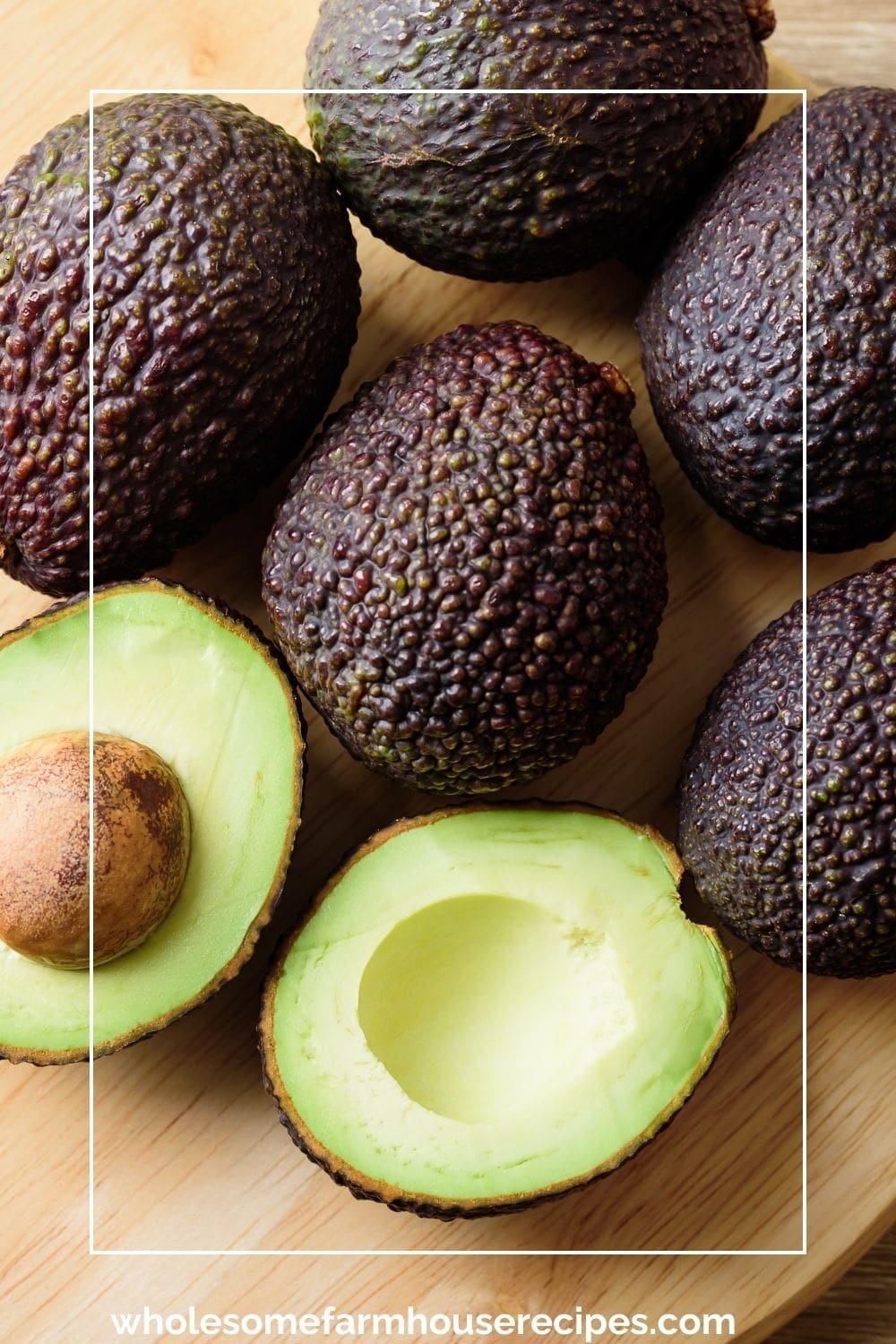Do you ever wonder how to tell a Ripe vs Unripe Avocado Inside? Avoid the frustration of purchasing disappointing avocados forever. Discover the secrets to identifying the perfect one for your slicing, dicing, or mashing. How to tell if it is too soft or too hard and why it matters.
What does an unripe avocado look like?
An unripe avocado typically has a firm texture and a bright green color. When you gently press on it, there’s minimal give, indicating that it’s not yet ripe. The skin may also appear somewhat shiny or glossy.
What do underripe avocados taste like? It has a slightly bitter or grassy taste, with a firmer texture that’s not as smooth and buttery as a ripe avocado.
What do Ripe Avocados look like?
When selecting avocados, aim for those with dark green or purplish-black skin with no brown spots and that yields slightly to gentle pressure when squeezed. These avocados are typically ripe and ready to eat. If they’re still firm, they can be left at room temperature to ripen.

Ripe vs. Unripe Avocado Inside: How to Tell if an Avocado Is Ripe
Finding the perfect avocado can be a bit of a challenge, especially since the outer appearance doesn’t always give it away. Don’t rely solely on color – it’s not a foolproof indicator. To become a savvy avocado shopper and snag that perfectly creamy, ripe fruit, here’s what you need to know.
1. Gentle Squeeze Test
When you’re at the grocery store eyeing those avocados, the easiest way to check is to cradle one in the palm of your hand and give it a gentle pressure. Here’s what to look for:
- Ripe Avocado: If it yields to light pressure, it’s ready to be sliced, diced, or mashed. The flesh inside will be creamy and luscious.
- Too Ripe: If it feels squishy, it’s getting overripe. Perfect for guacamole, but not ideal for slicing.
- Bruised and Brown: If there are uneven squishy spots or obvious damage to the skin, it’s probably bruised and brown inside. Avoid this one!
2. Check the Nub (Stem End)
Avocados have a tiny brown button-like nub where the stem used to be. Here’s how to interpret it according to bon appetit. Nudge the stem of the avocado. If it’s solidly in place, the fruit needs a little more time. If it comes away and you see a bright green dimple underneath, you’re in business. When it comes away and you see brown streaks, the avocado might be past its prime.
- Pale Color: If the color under the nub is very pale, the avocado isn’t quite ripe enough to use immediately.
- Light to Medium Green: This indicates ripeness. You’re good to go. Still, do the gentle squeeze test to confirm.
- Brown Under the Nub: The avocado is past its prime. Skip this one.
- Dark Black Avocados: If your avocado is dark black in color, it’s likely overripe or possibly even rotten. Avocados that have turned completely black and feel mushy to the touch are usually beyond their prime and may have started to spoil. It’s best to discard them if they have reached this stage.
3. Read the Label (Sometimes)
Some avocados come with a label that says “Fresh Now.” Unfortunately, that only applies for a day or two since avocados continue to ripen after being picked. Instead:
- Squeeze Test: Go back to the gentle squeeze test. Look for soft spots and blemishes.
Remember, avocados are like Goldilocks—finding the one that’s “just right” takes practice.

How can you ripen an avocado?
To ripen an avocado, you can try one of these methods:
Simply place the avocado on your kitchen counter at room temperature. It may take a few days to ripen fully.
Put the avocado in a brown paper bag with an apple or banana. These fruits release ethylene gas, which speeds up the ripening process. Check on it daily until it reaches your desired ripeness.
Microwave (if needed quickly). If you need to ripen it quickly, you can try microwaving it for a few seconds (10-30 seconds). Microwaving an avocado doesn’t result in ripeness; instead, it cooks the fruit. While the flesh will become softer, it won’t attain the creamy texture achieved through natural ripening or using the paper bag trick. Additionally, the nutty flavor won’t develop as fully. While not suitable for sliced avocado, microwaving can suffice if you plan to mash it, especially in a pinch.
Oven (if needed even faster). Wrap the avocado in foil and place it in a preheated oven at around 200°F (93°C) for 10-15 minutes. Again, be careful not to cook it, just warm it up slightly to soften it.
Remember to check on the avocado regularly to ensure it doesn’t overripen. Once you have a perfectly ripe avocado, store it in the refrigerator to slow down ripening further.
How to store avocados?
Unripe Avocados. If your avocados are unripe, the best way to keep them is at room temperature until they ripen. Placing them in a paper bag with an apple or banana can help accelerate the ripening process.
Ripe Avocados. Once avocados are ripe, you can slow down the ripening process by storing them in the refrigerator. This will give you a few extra days before they become overripe. For best results, if you don’t plan to use them within a day, store them in the fridge, whole. If you store them in an airtight container or crisper drawer, it will prevent them from drying out.
Cut Avocado. If you’ve already cut into an avocado but aren’t using the entire fruit, store the leftover portion with the pit intact. Place plastic wrap directly over the cut surface or store it in an airtight container with a piece of onion or lemon to help prevent browning. You can also rub lemon juice on the cut surface before adding the plastic wrap. Refrigerate and use within a day or two for best quality.
Avocado Puree. If you’ve mashed or pureed avocado, store it in an airtight container and cover the surface with plastic wrap to prevent oxidation. Use it within a day or two.
Remember to check your avocados regularly for ripeness and use them promptly once they’re ready to eat.

How Long Do Avocados Last?
The shelf life of Avocados depends on their ripeness and form. Unripe avocados typically take 3-7 days to ripen at room temperature, with a brown paper bag speeds up the process within 2-3 days. Once ripe, they last about 3-5 days in the refrigerator. Once cut, half an avocado or mashed will last about 24 hours in the fridge.
Can you freeze avocados?
Yes, you can freeze avocados, but they will undergo a change in texture once thawed, becoming softer and more suitable for use in recipes like guacamole or smoothies rather than for slicing or dicing.
How to Freeze a Ripe Avocado?
To freeze avocados, first, peel and remove the pit. Then, slice or mash the avocado. Sprinkle the slices or mashed avocado with lemon or lime juice to prevent browning. Place the prepared avocado in an airtight container or freezer bag, removing as much air as possible before sealing. Label the container with the date and store it in the freezer for up to six months. When you’re ready to use the frozen avocado, thaw it in the refrigerator overnight before incorporating it into your recipes.
I like to freeze in 2-3 tablespoon containers. This way, I can thaw just a little at a time and add it to my recipes or make my avocado toast in the morning with perfectly ripe avocados every time.
Is it safe to eat unripe avocado?
Yes, they are safe to eat. While unripe avocados are technically safe to eat, when unripe, their inside is tough, and it tastes awful. It doesn’t have that creamy consistency and rich buttery flavor. But don’t throw it away, ripen it instead.
Mashed.com and MIT Medical remark that avocados contain a fatty acid derivative called “persin”. While it’s harmless for most humans, it can cause illness or even death in birds and domestic animals. So, avoid feeding unripe avocados to horses, birds, or pets.
Do You Know Why Farmers Don’t Want You to Remove the Stem from Avocados?
Did you know that if the nub is missing from an avocado, the top part of the fruit has been exposed to air? This exposure accelerates ripening, often resulting in the top portion becoming brown and rotten by the time the rest of the avocado is ripe.
Since removing the stem causes the avocado to ripen faster, please don’t pull off the stem buttons. Farmers work hard to make sure they stay intact so the avocado will ripen evenly. When the button is gone the end will ripen faster and rot sooner and if it is rotting before it is ever sold to you. So, farmers recommend a gentle press as the test along with a visual inspection.






